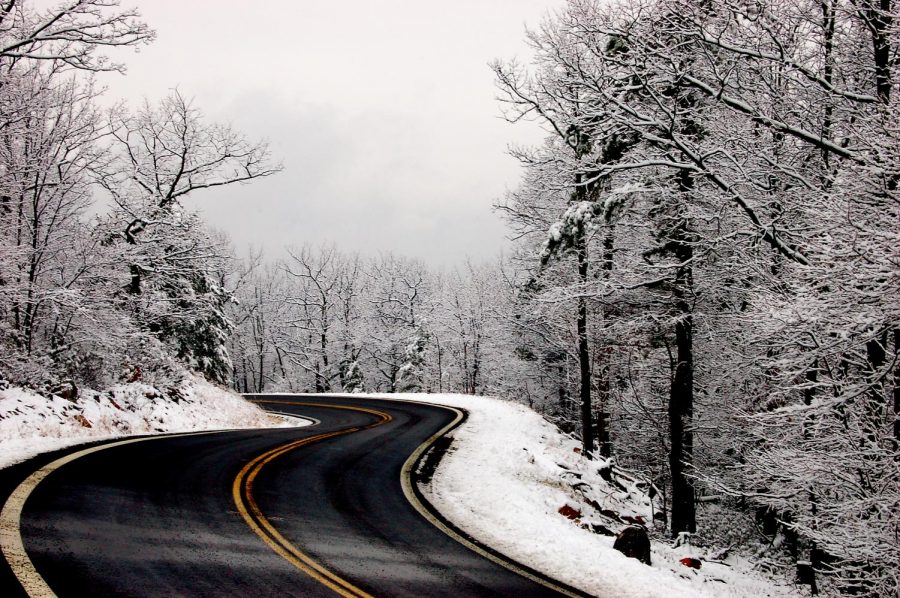Travel restrictions in many states require visitors to quarantine or show proof of negative COVID-19 test
Holiday travel is not recommended this year.
December 23, 2020
Because of the current health situation, it is not recommended that we go over the river and through the woods to Grandmother’s house this Christmas. But if you have to travel this holiday season, CNN Travel recommends that you know if there are COVID-19 related travel restrictions where you are headed.
Alaska has had some of the strongest travel restrictions of any state. Since Aug. 11 all visitors must have proof of a negative COVID-19 test, as well as submit an online “travel declaration” and plan for self-isolation upon their arrival. If you are there for work, be prepared to follow the travel plan your employer will need to file before you arrive. You can also buy the $250 test kit and self-quarantine until the results come in.
Connecticut is another state that requires self-quarantine upon arrival. Anyone coming from a state with a 10% or higher positivity rate or a positive case rate of 10 out of 100,000 must quarantine if they are not allowed to opt out with a negative test result from the last three days. All visitors are required to complete a travel health form.
Since Dec. 7 most of California is under a stay-at-home order. Bars and museums are closed as well as most tourism-related businesses. Visitors are expected to self-quarantine for 14 days upon arrival and avoid nonessential travel.
In Colorado, Pitkin County, where Aspen/Snowmass ski resort is located requires the completion of a health affidavit and a negative COVID-19 test less than 72 hours old to avoid a mandatory 14-day quarantine.
If you are planning to go to Hawaii and are older than 5 yrs., be prepared to show proof of a negative nasal swab test from a CLIA certified lab within three days of your flight or quarantine for two weeks after your arrival.
In Chicago, visitors are classified as red, orange or yellow, depending on the health situation in their state of origin. Different classifications require certain measures such as mandatory quarantine or providing a negative test result.
Kentucky and Ohio require anyone from a state with a 15% or greater positive testing rate to quarantine for 14 days. In Kentucky, they use the listing from the John Hopkins University website to decide which states are included.
In Maine, visitors not from New Hampshire and Vermont must quarantine for 14 days unless they sign a form stating they have had a negative test result within three days or test upon arrival and quarantine until the results come in.
Massachusetts requires the completion of a travel form before arrival as well as a negative test result less than 72 hours old. You will need to quarantine if you are waiting for test results and there is a $500 fine for failure to comply with any directives.
New Jersey is requiring all visitors outside the immediate region to voluntarily self-quarantine for two weeks and fill out a travel survey.
Anyone traveling to New Mexico will be required to self-quarantine for two weeks. As of Nov. 30, the only exempt state-of-origin was Hawaii.
New York requires visitors from non-contiguous states to quarantine for 14 days unless they can “test out”.
In early December, Oregon classified 25 counties as “Extreme High Risk” for COVID-19 and many of the tourism related businesses are closed in those areas.
Anyone over the age of 11 has to quarantine for two weeks upon arriving in Pennsylvania unless they can provide proof of a negative test less than three days old.
Rhode Island sets the threshold of positive test rates at 5% to determine who must quarantine for two weeks. Visitors from qualifying states can opt out of quarantine with a negative test result from less than three days prior to arriving.
In Vermont, anyone arriving for nonessential travel has to quarantine for at least seven days before they will be allowed to end the quarantine period early, with a negative test result.
Washington D.C. has restrictions for anyone from a state with more than 10 cases per 100,000 people. They ask visitors to get tested three days before arrival and if they are there for more than three days, to get tested again.
Washington State recommends that interstate and international travelers quarantine for 14 days. Gov. Jay Inslee has discouraged tourists from visiting.
CNN urges everyone to check for the most updated restrictions regardless of where you are visiting.


